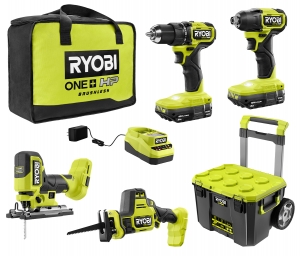Installing Wallboard with Adhesive Has Sound Benefits
Drywall Adhesive Eliminates Nail Pops, Improves Sound Deadening, Stops Drafts
This post is in partnership with Liquid Nails. All opinions are my own.
Those Pesky "Nail Pops"
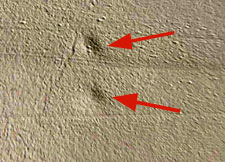 Wallboard, even if it’s installed with screws, can develop unsightly “nail pops”. These annoying wall blemishes are caused, in part, by framing lumber that’s not thoroughly dry when walls are built. As the wood loses moisture it shrinks slightly, leaving a small gap between the stud and the rear surface of the drywall. If the wall is bumped or the air pressure in the room suddenly spikes when, for example, a door is slammed, the wallboard flexes inward and can push a fastener head through the face.
Wallboard, even if it’s installed with screws, can develop unsightly “nail pops”. These annoying wall blemishes are caused, in part, by framing lumber that’s not thoroughly dry when walls are built. As the wood loses moisture it shrinks slightly, leaving a small gap between the stud and the rear surface of the drywall. If the wall is bumped or the air pressure in the room suddenly spikes when, for example, a door is slammed, the wallboard flexes inward and can push a fastener head through the face.
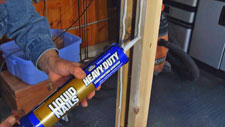 Before Fasteners Comes the Adhesive
Before Fasteners Comes the Adhesive
A bead of adhesive, applied to the studs before the drywall is installed, forms a suface bond preventing any gaps from developing and eliminating the source of "nail pops".
Improved Sound Deadening
Using a drywall adhesive can also improve a wall’s sound deadening ability. To satisfy my curiosity about this, I decided to conduct my own test. I made up two simulated wall sections using standard two by fours. On one, I installed the drywall 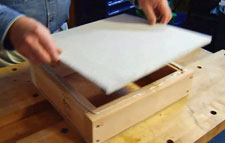 with only screws. On the other I first applied a 3/8” bead of Liquid Nails Heavy Duty Adhesive then put in the screws. After letting the adhesive dry, I tapped each test module with an improvised drumstick. Clearly, I could hear the difference. Take a look at the video and listen for yourself.
with only screws. On the other I first applied a 3/8” bead of Liquid Nails Heavy Duty Adhesive then put in the screws. After letting the adhesive dry, I tapped each test module with an improvised drumstick. Clearly, I could hear the difference. Take a look at the video and listen for yourself.
Does Away with Drafts
Walls put up with adhesive are also more draft-free. Using the same test modules, I ran a hose from the exhaust outlet on my shop vacuum to a hole in the back of the test pieces, essentially pressurizing them from the inside. Paper streamers attached near the edges of the wallboard made it abundantly clear that drywall installed with adhesive is virtually airtight.
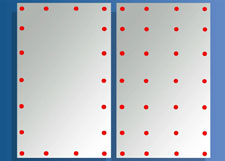 Fewer Fasteners
Fewer Fasteners
Using wallboard adhesive like Liquid Nails can also substantially reduce the number of fasteners required by eliminating the need for screws or nails in the field or center of the board. Granted, you have to factor in the additional time requiring to apply the adhesive, but given the other benefits, this extra step would seem well worth it.
Recommended Articles

The How’s and Why’s of Upgrading a Central AC System
A step-by-step video demonstration showing removal and replacement of a central air conditioning system. Includes advantages of new, state-of the-art AC systems.

If You’ve Got a Project That Involves Demolition, You’ll Want to Know About This Tool.
I try out a new tool designed and engineered to do one task exceptionally well -- demolition.
